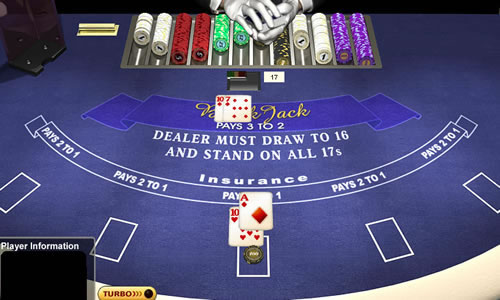How to Play Blackjack
1. The History of Blackjack
Blackjack, known for its perfect blend of skill and chance, has captivated players for centuries. Here’s how this iconic card game became a global casino game:
Origins: 18th-Century France
Blackjack’s roots trace back to “Vingt-et-Un” (Twenty-One), a popular French card game where players aimed to reach 21 without busting. By the 1700s, it was a favorite in royal courts and Parisian salons.
Crossing the Atlantic: The Birth of “Blackjack”
The game migrated to America in the 1800s but struggled to gain traction. To attract players, casinos offered a 10:1 bonus payout for hands containing the Ace of Spades and a black Jack (Jack of Clubs/Spades). Though the promotion faded, the name “Blackjack” stuck.
The Strategy Revolution
- 1950s: Mathematician Roger Baldwin published the first statistical analysis of blackjack, laying the groundwork for modern strategy—though his methods required complex calculations.
- 1962: Edward O. Thorp, the “Einstein of Blackjack,” revolutionized the game with his book Beat the Dealer. He introduced card-counting techniques and basic strategy, proving players could reduce the house edge.
Casino Countermeasures
Thorp’s strategies sparked a player boom in the 1960s, forcing casinos to adapt:
- Introduced multi-deck shoes (4–8 decks) to thwart card counters
- Added rules like dealer hits on soft 17 to increase house advantage
- Implemented frequent shuffling to disrupt tracking
Blackjack Today
Despite casino countermeasures, blackjack remains the world’s most popular casino card game due to:
- Low house edge (as low as 0.5% with perfect strategy)
- Skill-based gameplay balancing luck and decision-making
- Global accessibility in land-based and online casinos
2. Learn how to Play Blackjack: The Rules
Blackjack is the ultimate casino card game, blending strategy and luck. Here’s everything you need to play confidently:

Blackjack Basics
Objective: Beat the dealer by getting closer to 21 without busting (exceeding 21).
Card Values:
- Face Cards (K/Q/J): 10 points
- Aces: 1 or 11 (your choice)
- Number Cards: Face value (e.g., 7♠ = 7)
Gameplay Step-by-Step
- Place Your Bet: Choose a wager within table limits.
- Initial Deal:
- You receive two face-up cards.
- Dealer gets one face-up card and one face-down “hole card.”
- Player Decisions:
- Hit: Take another card.
- Stand: Keep your current total.
- Double Down: Double your bet for one additional card (ideal on 10/11 vs. dealer 4-6).
- Split: Divide paired cards into two hands (always split Aces!).
- Dealer’s Turn:
- Reveals hole card.
- Must hit until reaching 17+ (varies by casino rules).
Winning & Payouts
- Blackjack (Natural): Ace + 10/J/Q/K. Pays 3:2 (e.g., 10bet→10bet→15 profit).
- Dealer Busts: You win if your hand stays ≤21.
- Push: Tie = bet returned.
Advanced Moves
- Insurance:
- Offered when dealer shows Ace.
- Bet half your original wager to protect against dealer blackjack.
- Rarely advised—high house edge.
- Splitting Pairs:
- Split identical cards into separate hands.
- Aces: Receive one card each; 21 ≠ blackjack (pays 1:1).
- Soft vs. Hard Hands:
- Soft Hand: Contains Ace counted as 11 (e.g., A♣ + 6♦ = 17 “soft”).
- Hard Hand: No Ace or Ace = 1 (e.g., 10♠ + 7♥ = 17 “hard”).
Key Variations to Know
- Deck Count: Single deck (1.5% house edge) vs. 6-8 decks (0.5% edge).
- Dealer Rules: Some hit on soft 17 (Ace + 6), increasing house advantage.
- Double Down: Allowed on any two cards vs. restricted to 10/11.
Pro Tips for Beginners
- Master Basic Strategy: Use charts to minimize house edge (as low as 0.5%).
- Avoid Insurance: The math rarely favors this side bet.
- Practice Free Online: Many casinos offer demo modes to hone skills risk-free.
3. Blackjack Strategies & Tips: Maximize Wins, Minimize Losses
Master blackjack with these proven tactics to reduce the house edge and boost your bankroll:
1. Strategic Betting Patterns
- Play Multiple Hands: Spread bets across 2-3 hands to reduce variance and extend gameplay.
- Progressive Betting: Increase wagers after wins, but reset to base bets after losses.
- Avoid Insurance Bets: Side bets like insurance carry a 5-7% house edge—rarely worth the risk.
2. Soft Hand Mastery
- Double Down on Soft 18/19:
- Soft 18 (A+7) vs. dealer 2-6 → Double for higher profit potential.
- Soft 19 (A+8) vs. dealer 6 → Aggressive but statistically sound.
- Never Count Aces as 1 First: Maximize flexibility with soft hands.
3. Bankroll Management Essentials
- 30% Win Goal: Aim to win 30% of your session bankroll (e.g., 150from150from500).
- 5% Rule: Risk ≤5% of your total bankroll per hand to survive losing streaks.
4. Card Counting Basics
- Casual Counting: Track low cards (2-6). More small cards = higher chance of dealer busts → raise bets.
- Avoid Continuous Shufflers: Stick to single/deck games for counting opportunities.
5. Golden Rules for Key Plays
✅ Always Split: 8s and Aces (even against strong dealer upcards).
✅ Double Down: On 11 vs. dealer 2-10.
❌ Never Split: 10s, 5s, or 4s.
❌ Never Take Even Money: Reject 1:1 blackjack payouts—hold out for 3:2.
6. Surrender Wisely
- Late Surrender: Fold weak hands (15-16) vs. dealer 10/Ace to save 50% of your bet.
7. Table Selection Tips
- Favor Tables With:
- ≤2 Decks (lower house edge)
- Dealer Stands on Soft 17
- Double After Splits Allowed
- Avoid 6:5 Blackjack Payouts: These tables spike the house edge to 1.4%+.
8. Online Blackjack Caveats
- Bonus Playthrough: Many sites require 20-50x wagering on blackjack bonuses—check terms first.
- Stick to RNG Tables: Avoid “live dealer” games if casually counting cards.
9. Common Mistakes to Avoid
- Chasing Losses: Stick to your bankroll limits.
- Ignoring Basic Strategy: Use free charts for optimal decisions.
- Overvaluing “Hot Streaks”: Outcomes are independent—stay disciplined.
Final Tip: Practice with free blackjack simulators to refine skills risk-free. Remember: The best strategies mean nothing without patience and discipline.
